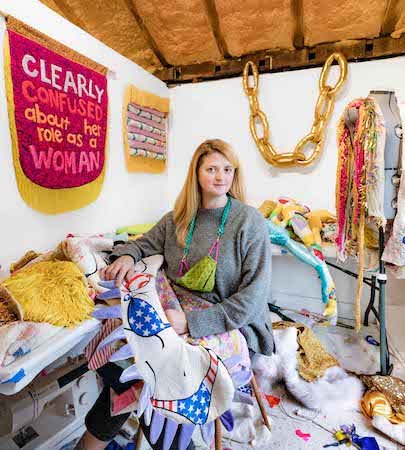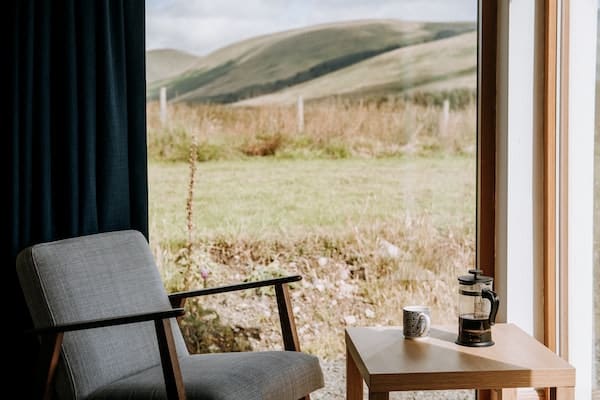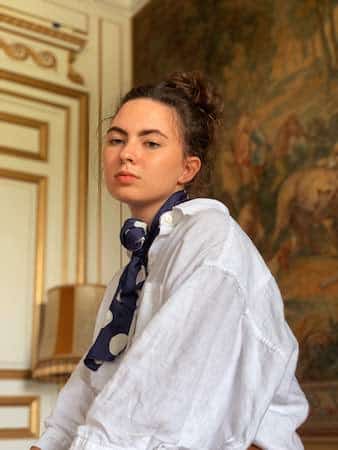An artist residency is a great opportunity in a creative’s career to spend dedicated time on artwork as well as to meet new artists. There is a lot to consider before and during the application process, such as working spaces, finances, and how to catch the attention of application reviewers.
It is important to look into the details of each residency you’re considering, as there are many variations in length, focus, and commitment. There can be a lot to learn about residencies before you begin applying, so take some time to read about the key factors that can help you find the perfect one for you and hear from some artists about their own experiences with residencies and why they continue to participate more during their careers.
What to Look for in an Artist Residency
Time
Most residencies last between a couple of weeks to a few months, so the time you have to dedicate to one can narrow down your search and selection. There are sometimes fees involved (more on this below), along with decisions to make about your current housing. How far you want to travel can be a deciding factor as well, as most residencies won’t cover the cost to get to them.
Natalie Baxter, a sculpturist based in upstate New York whose residencies have included Wassaic Project, Vermont Studio Center, Stove Works, and Konstepidemin, spoke about the difference in residencies during her 20s versus now with a family.

Sculpturist Natalie Baxter, who has completed artist residences from Vermont to Tennessee to Sweden, finds longer timeframes to be more beneficial for her work now that she has a family.
Baxter’s first residencies were month-long, as well as close to New York City, where she worked at the time. The time period allowed her to explore the new idea she applied to work on but also continue with her job in the city while financially being able to maintain her living situation.
Now that she is married and has a family, Baxter has enjoyed the time with residencies that are a few months long rather than just one. In her most recent residencies, her family has traveled and spent time in Tennessee and Sweden. In her opinion, a residency that is only one month in her career would not be as beneficial. With a longer residency, she is able to spread her focus across her work and family and explore a new area.
Space and Supplies
Deciding on the right studio space can be important, depending on your craft. Different residencies vary in the studio spaces they offer, such as size, location, and communal working space. One residency might offer individual rooms to work in, while another might have all the artists working in a large space together. Most residencies offer housing and access to regular meals or a kitchen. Make sure you check details and inquire about what spaces and resources will be available, as well as if the accommodations align with your best working environment.
Nono Flores, a Georgia-based illustrator and animator who completed an international artist residency at Chateau Orquevaux in France, was much more focused on discovering the new country and town she found herself in. Much of her work was outside the studio space she was given, sketching the French landscape, buildings, and other residents at work.
Figure with your goals in mind what is the ideal space for you to work in. If you’re working on a large-scale piece, you’re not going to want a small studio you can’t move around in, and vice versa. But be adaptable; a new space may have challenges that can open you up to more creative solutions and exploration in your work.
It is also important to know what sort of materials you can bring and what will be available to you while you are at a residency. For example, if your work requires a sewing machine and you don’t wish to bring your own, it’s best to make sure one is available. If you do not require a large space to work, you can make that clear in your application. Flores was able to work primarily in sketchbooks and with personal materials, but Baxter, who works heavily in textiles, couldn’t bring her home studio full of materials to each location. Instead, Baxter would seek vintage and secondhand textiles and fabrics to work from, oftentimes letting her findings influence what she would create.
For your discipline, consider the opportunity to work in new mediums or experiment with what is locally available if you’re not able to bring all the usual supplies with you to a residency. Inspiration and materials drawn from the region where the residency is located have the potential to take your work in an exciting new direction.
Grants, Fees, and Fellowships
Attending a residency can be expensive, especially with the time off work, current housing, travel, and residency fees. Most residencies have fees to join, so knowing the grants and fellowships offered when you apply is always helpful.
Sometimes, anyone who applies for a residency is automatically considered for any fellowship available. Upon acceptance, you hear whether or not you also received a fellowship. Other residencies might have fellowships listed with the application information, and it’s up to the applicant to apply to the fellowship.
Some fellowships may require a certain background or artistic focus to be eligible. It’s important to know whether it is appropriate to apply for a fellowship at a residency or not. During the application, a residency may ask for additional materials or a written statement on how the fellowship can continue to help you with your work.
Depending on the specifications of the grant or contributor that supports a fellowship, you may be required to produce something for the residency or do some work. In Flores’ case, she needed to create something to leave behind at the residency. She sketched large images of the chateau that hosted the residency. Baxter has done a similar thing, as well as given artist talks and open studios at various residencies.
Baxter does make a point of being in a position to do work like open studios and talking with visitors, as the time with your work can be a personal exploration.
“It’s important to know when to invite someone into your studio,” she said. “Giving talks can be stressful for someone who hasn’t done them before, especially if your work is personal to you.”
Since Flores’ residency was only a few weeks, there was one open studio show at the end for the local community to view their work.
“I had spent as much time trying to be a part of the town as possible, so it was nice to have familiar faces come and see what we all had been working on,” she said.
Key Takeaways from an Artist Residency

An artist residency can offer you time alone or time with peers that help you learn and grow.
Network and Community
During her earlier residencies, Baxter emphasized that a big part of her success in participating was the networking and friendships she developed.
“An Artist Residency is great when you’re early on in your career,” she said. “They are an opportunity to meet others and to network with artists.”
During one particular residency, Baxter was around many generations of artists and heard about everyone’s journey in their respective careers. It was great for her to hear from many artists at different points in their lives and how an artist residency can transform each individual over time.
For Flores, her artist residency proved to be an opportunity for future work. She became close with the director of her residency, even setting up an opportunity to work for them the following summer. The relationships she developed while at her residency were still important to her, and Flores wishes to continue allowing those to grow over time.
Schedule and Structure
One of her favorite things about her residency was the schedule that Flores established for each day. She would get up, get some coffee, and spend most of her time outside sketching in the early morning. In the evenings, the residents would all gather for a family dinner before turning in for the night.
This consistency in schedules and work was one of the reasons that both Flores and Baxter enjoyed their residencies. For the length of time, each was able to establish set times for working and fully dedicate themselves to the creative process.
“The time allows for a new headspace,” said Baxter. “You’re able to remove distractions and focus on your ideas.”
Even with a growing family, Baxter notes the importance of balancing work and family. She praises her partner, who she credits for making residencies a part of her career a reality.
Response to Society and Culture

For Nono Flores, the rich, rural French countryside of her artist residency allowed for quiet meditation in her work with lots of natural elements incorporated.
When applying to residencies, the new idea or path you pitch will greatly lead your work, but oftentimes, the influence of the new space and people can transform your work even further in ways you may not expect.
This is true for both Flores and Baxter, who let outside forces like landscape, people, and materials influence the work they wanted to do.
Baxter’s use of new materials for each place would transform her ideas and shape them into final pieces. While still focusing on her known craft and technique, the varying options allowed for more experimentation outside her home studio.
Your experience in a new space can also influence just how much work you get done. Don’t feel pressured to have the maximum amount of productivity an individual can achieve. An essential part of an artist residency is experiencing a new space and learning.
You can spend your time learning a new skill from another resident or reading about new ideas. Some innovative artist residences like the Orange Door are even devoted to giving artists downtime to rest, recharge and talk about their work with other residents without demands for production!
Residencies are for you to better your work, so as long as you feel you are progressing, the ways you go about the time aren’t that relevant.
How to Stand Out in Your Artist Residency Application
There are different ways an artist can stand out when applying to residencies, but across the board, the best way is to apply to places that push your ideas forward.
When Baxter would apply for an artist residency, she usually had a new idea that she would like to dedicate some time to work on. Doing a residency was a good, set amount of time for her to dive into this new idea. Fleshing out the details of the work that you would like to do in your application can show how closely your idea or work can align with relevant opportunities.
Being authentic in your application also shows that you already know about where you are applying. Read applications closely to know if you are the best fit for a residency. Being honest about your goals and ideas can help those reviewing know if you fit all the criteria they are looking for in a resident. Many applications require a fee to apply, so it’s best not to waste too much time and energy on applications and residencies that don’t seem like a good fit.
When prepping your portfolio or work to include with your application, make sure files are high quality. Good photos of work that show the most amount of detail and true-to-life color are in your best interest to include. Darkened or grainy photos won’t show your work in its best light.
Check deadlines to know when is the best time to submit your application. Some residencies may accept applications all year long, but others will only open applications for a short amount of time. If you’re interested in a summer residency, applications may need to be submitted up to nine months to a year in advance. Note how much time you’ll need to get your application together before submissions close.
Residencies can be a great career tool for trying new ideas and spending dedicated time with your work. Whether you spend a few weeks or a few months in a new city or the depths of the woods, an artist residency can be a productive experience, allowing for new community, structure, and friends.
To find some of the top artist residency programs, see “9 Artist in Residence Programs to Jumpstart your Career.”
Have you participated in an artist residency? How did the experience influence your creative practice and your career? Let us know in the comments.
